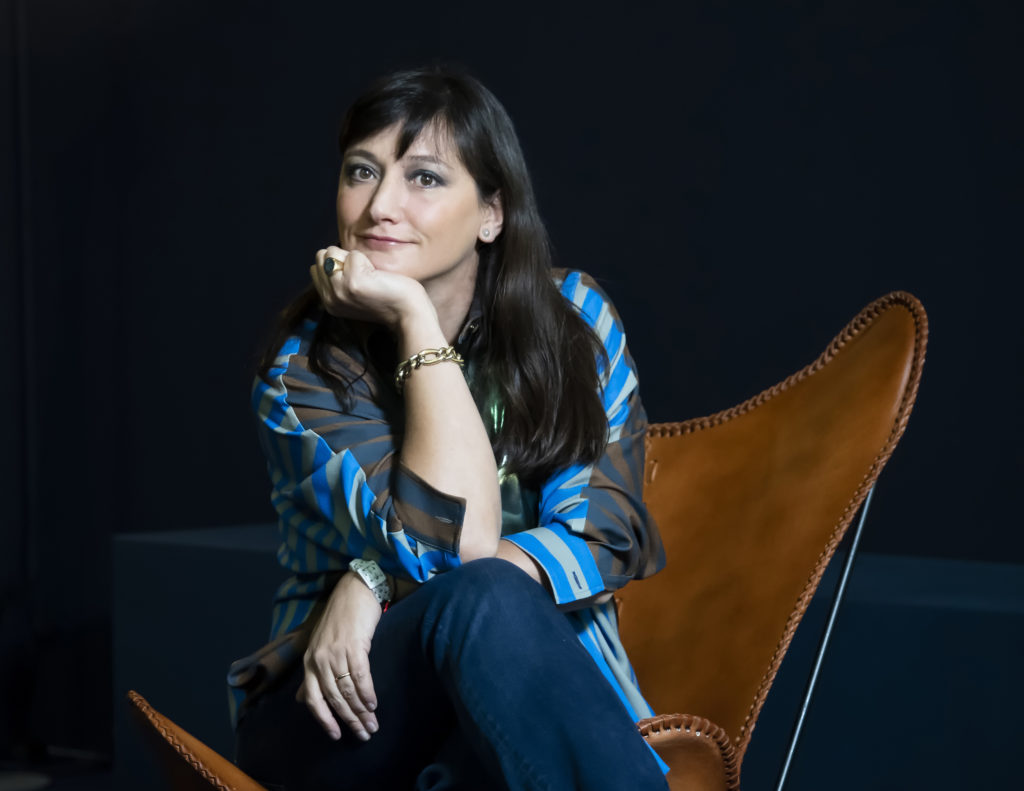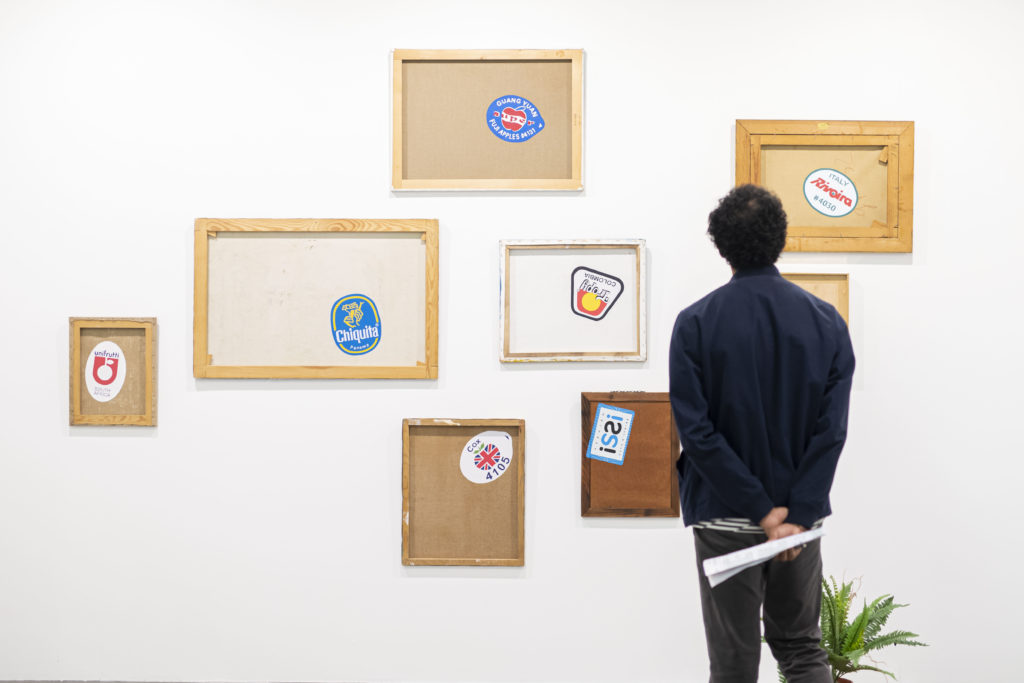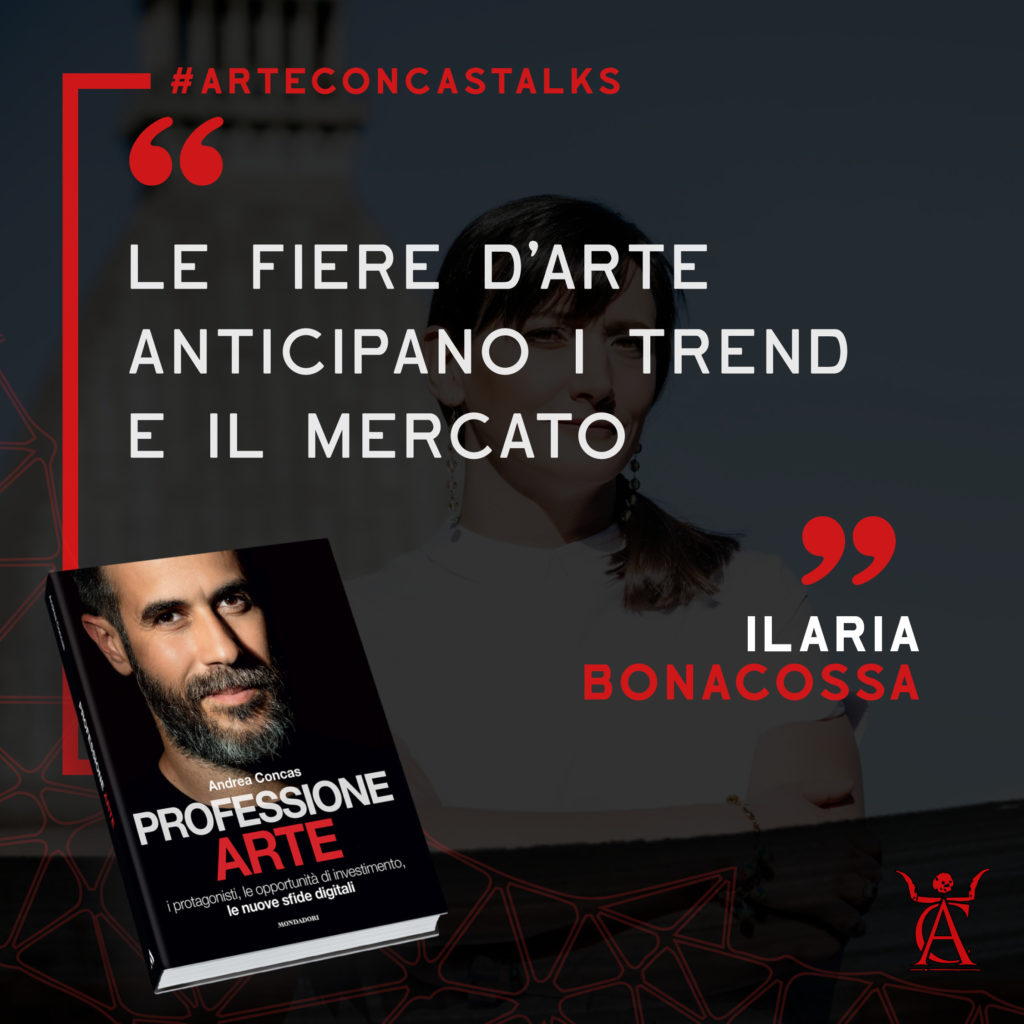The interviews of ProfessioneArte.it
She is Ilaria Bonacossa Director of Artissima
Five questions to know in advance the great art professionals, the daily challenges to face, the choices that have determined their path in the art system and in the art market, the digital changes and the advice for those who want to start the same career in collaboration with ProfessioneARTE.it.
“I can say that the thing I love even more is curating exhibitions.” So it is for Ilaria Bonacossa, director of the art fair Artissima in Turin, an all-Italian excellence recognized internationally, who in these months faces the digital challenge with new vitality.
The challenges do not frighten her, on the contrary, one of the first to convince her family that the road to Contemporary Art would not be completely wrong.
Today there are many curatorial projects and one of the most important is the direction of the Artissima art fair until 2021, overcoming one of the most complex moments for the art world, a health emergency that has in fact put major events on stand-by at a global level.
While waiting for the 27th edition, scheduled from 6 to 8 November 2020, Artissima did not miss a moment and went online with the “Fondamenta” platform, a real “collective project” with a curatorial slant, as defined by Bonacossa herself, which for a month brought together 200 works presented by the participating galleries.
The digital revolution has therefore been triggered.
Ilaria Bonacossa’s curatorial vision stands out for its strategic, managerial approach, with a careful approach to projects, but with great sensitivity and intellectual honesty towards the works and artists with whom she collaborates.
The rest to be discover in this interview…

Director of Artissima, International Contemporary Art since 2017, recently confirmed in her position until 2021, Ilaria Bonacossa is curator and art critic.
Graduated in Contemporary Art History at the State University of Milan, after a master’s degree in curatorial studies at Bard College, USA, she collaborates in New York with the Whitney Museum. Curator for seven years at the Fondazione Sandretto Re Rebaudengo in Turin, from 2012 to 2017 she was Artistic Director of the Museo Villa Croce, Genoa and since 2014 she has been curator of the permanent contemporary art installations of Antinori Art Projects.
In 2013 he curated Katrin Sigurdardottir‘s project at the Icelandic Pavilion at the Venice Biennale. She was a member of the Technical Committee for the acquisitions of the FRAC Provence-Alpes Côte d’Azur museum in Marseille, a member of the Scientific Committee of the PAC in Milan and director for Italy of the international programme Artist Pension Trust. In 2007 she was a member of the Jury for the Golden Lion of 52. Venice Art Biennale.
Since 2016 he has been artistic director of the La Raia Foundation. Since 2017 he has been a member of the committee of selection for the Prince Pierre Prize, Monaco.
_________________________
1.How did your journey into the art world begin?
I come from a family of collectors and my mother has always restored paintings, the passage for me was from the world of art to the world of contemporary art that was looked at with suspicion in my family.
2.How would you describe your profession today?
I’ve been running Artissima for almost four years. My work is managerial, but always careful to support artists and their projects.
I can say that the thing I love even more is curating exhibitions.
3.How has your profession changed over time?
I initially worked on individual exhibitions, managing budgets and productions.
Gradually my work has been enriched with a strategic vision of what a cultural institution should do.
I have learned how to manage relationships with stakeholders, sponsor partners or public institutions and make their relationship with the culture strategic for both parties.

4.What impact is digital having on your industry?
Among art professionals, digital has for years been a central tool for studying and
the meeting, albeit digital, with artists and projects.
I think this year has triggered a digital revolution for the art world, which was perhaps lagging behind other sectors.
At Artissima since 2017 we have turned the catalogue into a digital project and we believe it is an effective tool for bringing audiences and enthusiasts together with our galleries. I think a human vision behind digital is crucial, but it is linked to a form of storytelling.
5.What would you recommend to a young man who wants to take up his profession?
I think the most important thing is to look at as many works and exhibitions as possible, to develop one’s own taste and sense for art.
Supporting and developing artists and projects with intellectual honesty is the real secret of success.
It’s a long road, sometimes frustrating, but full of satisfaction






